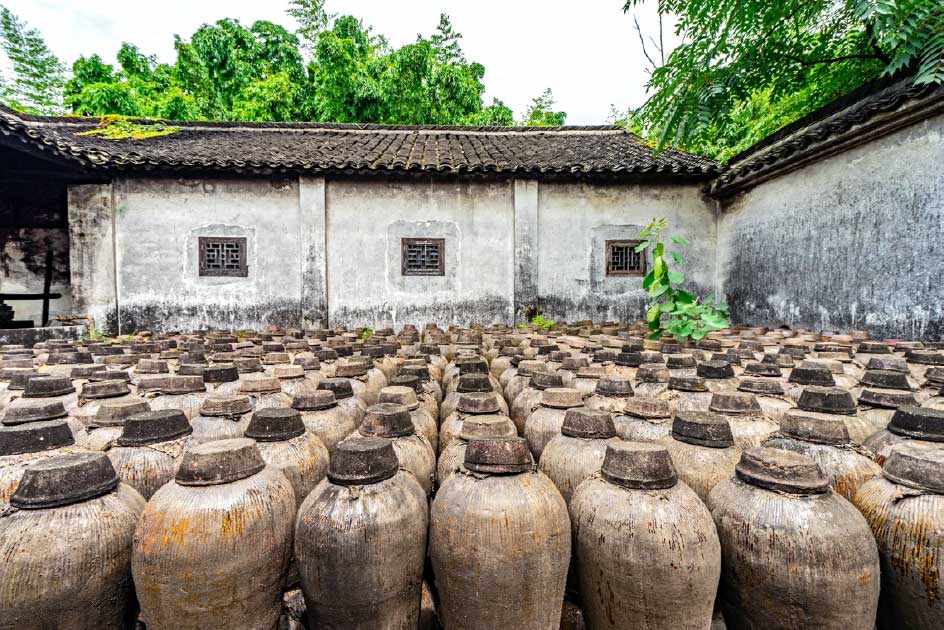6000-Year-Old Amphorae Reveal Ancient China’s Pursuit of Perfect Beer
Beer has been brewed for thousands of years and has played a very important role in societies. Researchers who were examining some Neolithic amphorae fragments have made a startling discovery. They have found that the ancient Chinese used amphorae to make beer and had developed two methods. These methods were still being used right into the historical period.
Researchers from Stanford University examined fragments from nine ancient amphorae. They were unearthed in the 1960s at a Neolithic site near the village of Dingcun, in Henan, China, which is 6000 years old. This site is associated with the Yangshao culture, which was a semi-nomadic and agricultural society. Later the Yangshao culture spread all over the Yellow River Valley, in what is known as the Miaodigou phase (c 6000-5000 BC). The amphorae were used to store alcoholic beverages and may even have been drinking vessels.
- Archaeologists discover a prehistoric brewery in China dating back 5,000 years
- A Drink Fit for Goddesses: Beer and Mankind in Ancient Mythology
- World’s Oldest Sake Brewery Unearthed at Temple in Japan

Fragments of amphorae found at the site in the 1960s and examined in the study. (Li Liu / Yongqiang Li / Jianxing Hou)
Sophisticated Brewers
The researchers wanted to establish if amphorae were also used in the fermentation of beer. The shards were first washed and “then each was placed in a clean plastic bag with distilled water, which was immersed into an ultrasonic bath for 3 minutes,” according to the Journal of Archaeological Science. The residue liquid from each of the shards was then processed using the EDTA dispersion and the heavy liquid separation methods.
The team found fungi in the amphorae, this proved they were used to brew beer, and there was evidence that they used two distinct methods. One method identified was the use of malts, made up of a compound of millet, seeds, and rice to produce a beer that was low in alcohol. The second, a more sophisticated method “made use of qu, moldy grass and grains, to produce stronger drinks,” states The Daily Mail. Qu is a type of dried fermentation starter grown on a solid medium and used in the production of traditional Chinese alcoholic beverages. These methods were possibly combined to produce different types of alcohol and may suggest that the ancient Chinese were sophisticated brewers.

Fungi found inside the shards (pictured) reveal the amphorae were used for alcohol fermentation. (Li Liu / Yongqiang Li / Jianxing Hou)
The study has possibly found evidence for the oldest known beer brewing process in East Asia. Previously 5000-year-old remnants of amphorae, from a site in Shaanxi were uncovered, which showed that people were making and storing beer, on a huge scale. This was believed to be the earliest example of brewing in China. This site was also associated with the Yangshao people.
Origins of Chinese Beer
Dr. Liu Li, one of the researchers who took part in the study, stated that the “Yangshao people may have been experimenting with various methods to find the best way for alcohol making,” reports The Daily Mail. These two methods were handed down the generations and they were later recorded in Chinese literature in the first millennium BC. The beer with a high concentration of alcohol was termed jiu and that with a lower level of alcohol was known as li.
The production of the beer involved two separate biochemical stages. The first step is saccharification, which involves transforming starch into sugars by means of enzymes. Subsequently, the sugars are turned, by adding yeasts to ethyl alcohol. When brewing beer with malts, these steps were done separately but when qu was used, the two steps were combined into one process.
Ancient Amphorae for Brewing Beer
The amphorae were made in large numbers in Neolithic China and some were up to 3 feet high (1m). These vessels played a key role in the Yangshao culture, and it eventually played a key role in the production of alcohol. The Journal of Archaeological Science reports that “the amphora’s restricted mouth and narrow neck can be effectively sealed, in order to exclude as much air as possible and encourage anaerobic conditions during fermentation process.”

One of the ancient amphorae unearthed at the site, restored and used in the study. (Li Liu / Yongqiang Li / Jianxing Hou)
The earthenware vessels have been found over a wide area of the Yellow Valley. Dr. Liu Li told The Daily Mail that “the spread of amphorae may also indicate diffusion of beer-making techniques.” This possibly indicates a growing taste for booze in Stone Age China.
Alcohol and Civilization
This was probably related to the growing importance of feasts and communal rituals in early Chinese societies. The researchers wrote in the Journal of Archaeological Science that it is “possible that competitive feasting activities may have been intensified.” These may have been important in developing relationships between communities and resulting in cultural interactions.
The study is very important because alcohol production has been very significant in the development of human societies. The researchers are quoted in The Daily Mail as stating “archaeologists have encountered many challenges in their efforts to detect ancient fermentation technologies.” However, their study has identified how the ancient Chinese fermented alcoholic drinks. This is helping experts to better understand the evolution of alcohol production, which in turn is yielding insights into the distant past.
Top image: Ancient amphorae found in Wuzhen, China. Please note that this is a representation and are not the amphorae used in the study. Source: lotusjeremy / Adobe stock
By Ed Whelan



















